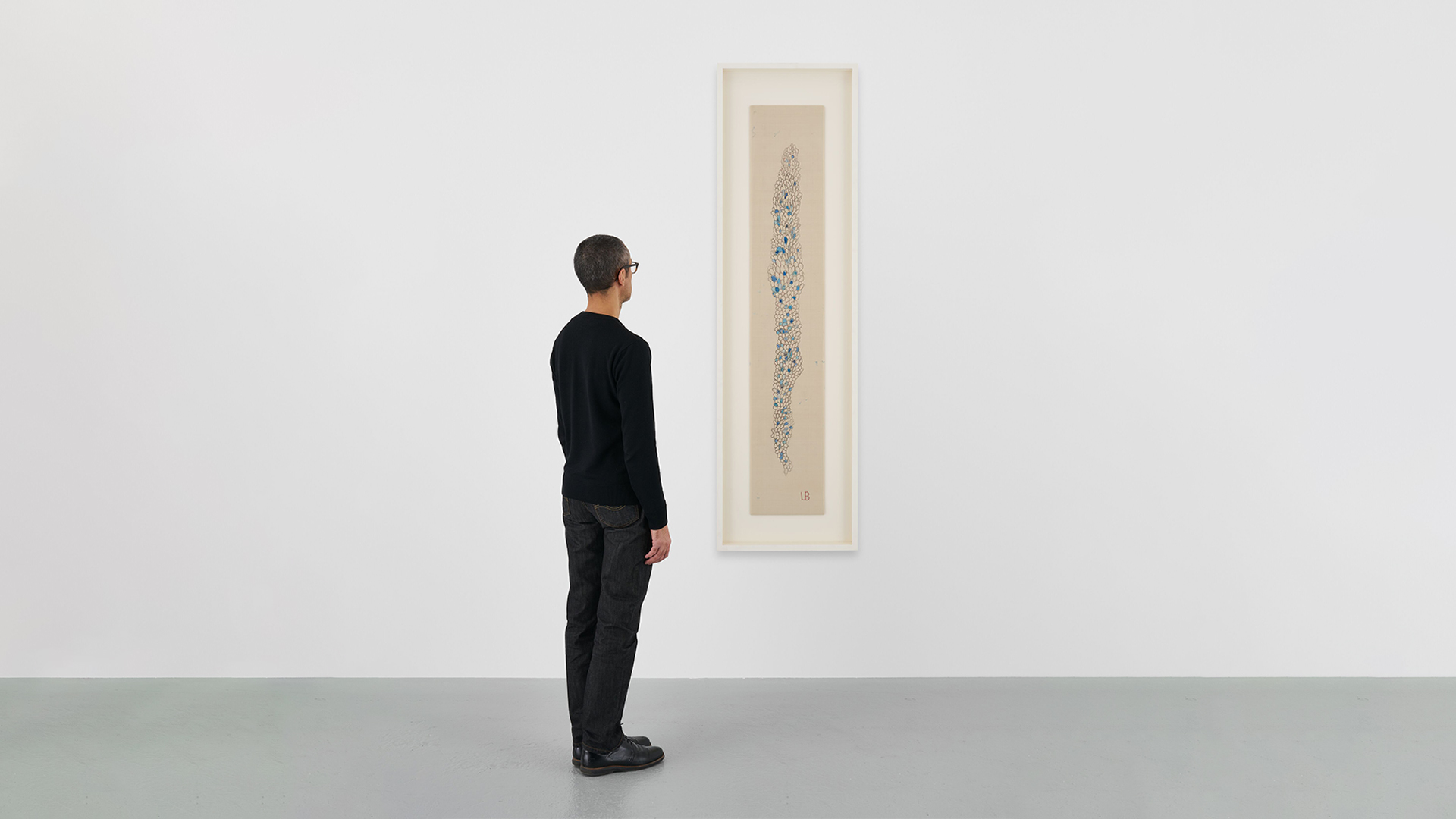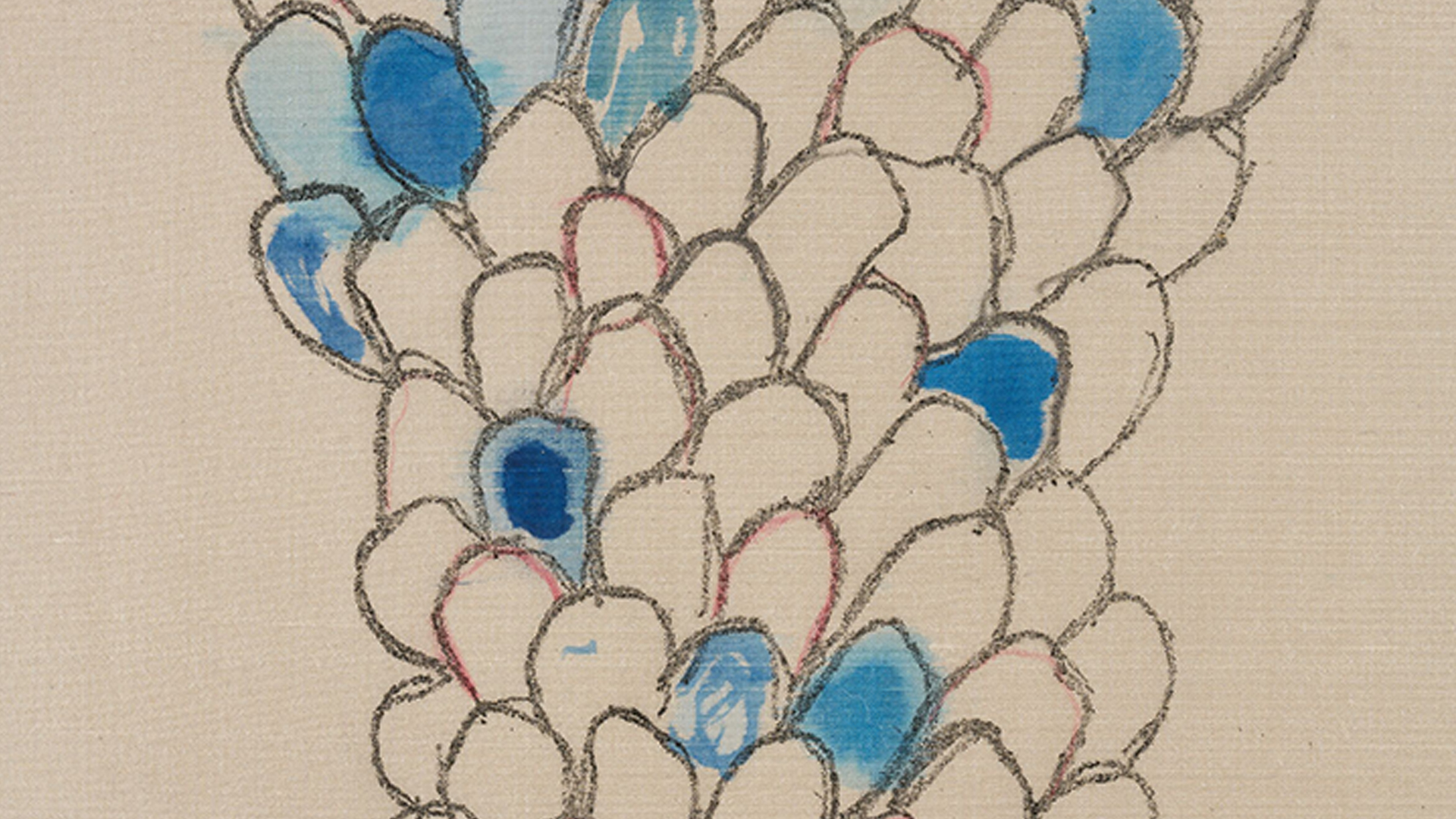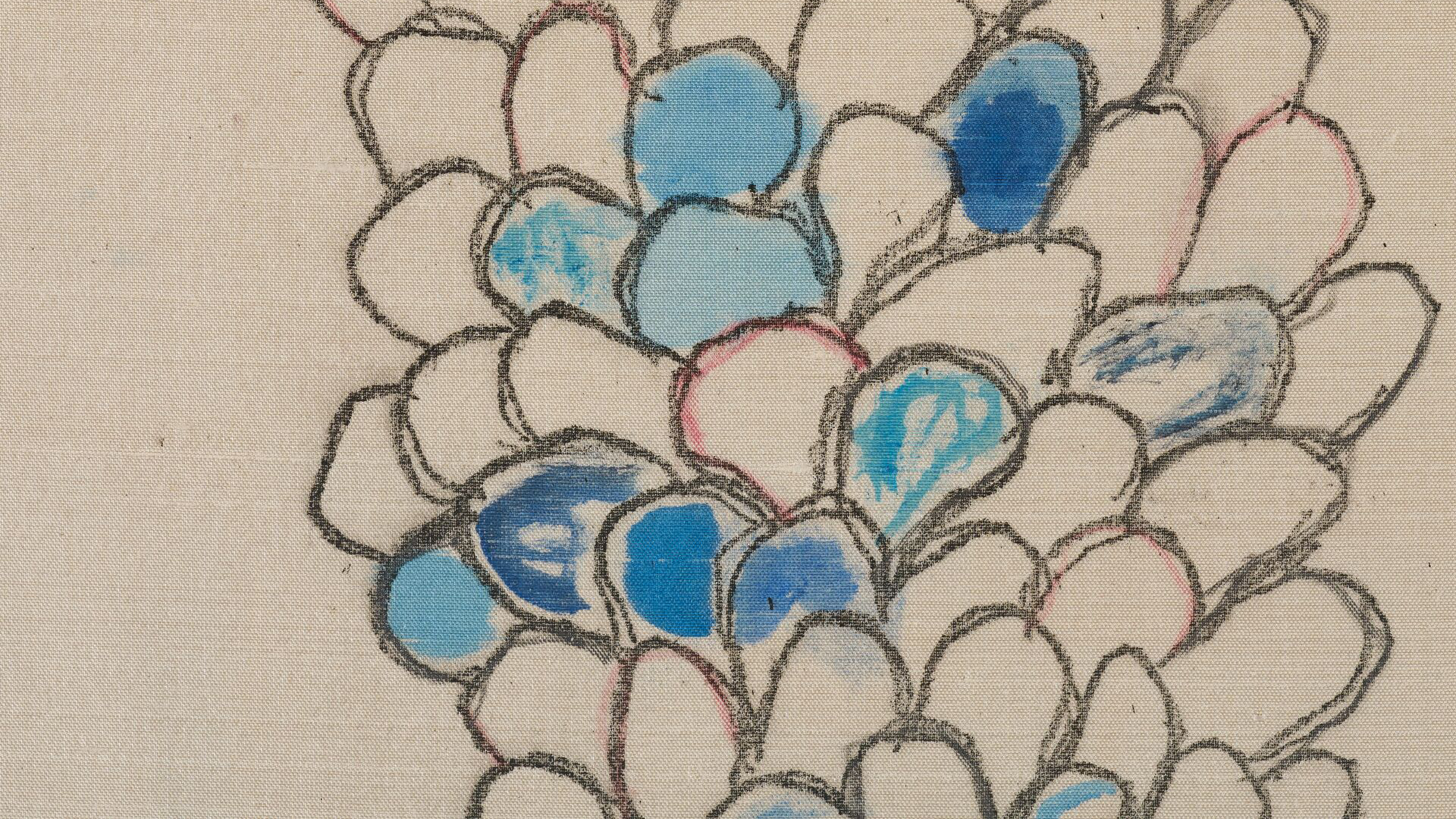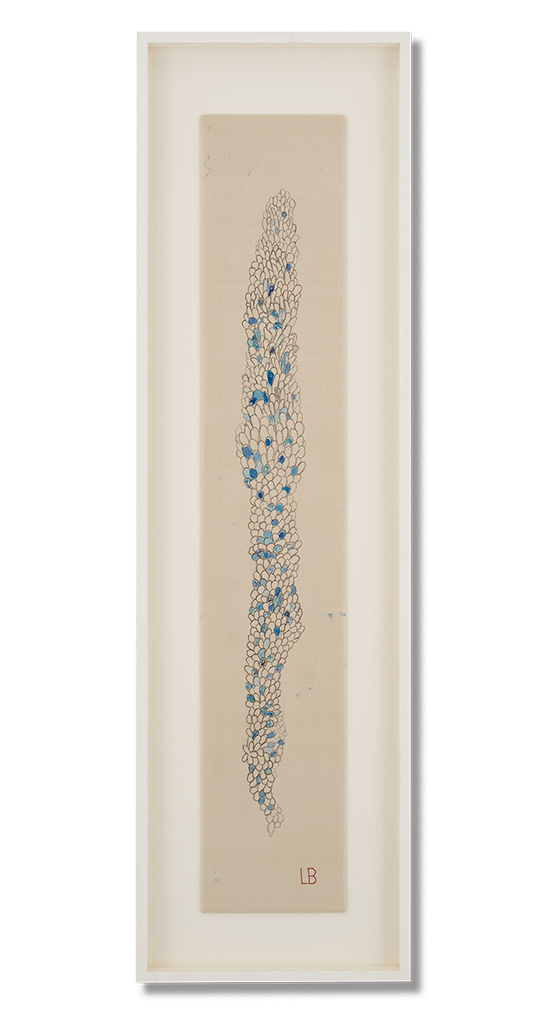Louise Bourgeois
Swaying
Swaying
Price available upon request
2006
Watercolour, ink, coloured pencil, pencil, etching on fabric
Unique variant
163.2 x 29.2 cm / 64 ¼ x 11 ½ in
193 x 55.9 x 7.9 cm / 76 x 22 x 3 ⅛ in (framed)

Louise Bourgeois’ ‘Swaying’ (2006) is an important late work from the artist’s ‘Turning Inwards’ series of etchings, which were created between 2005 and 2010. Highly innovative until the very end, Bourgeois entered a particularly experimental phase of printmaking during the final five years of her life. Between 2006 and 2007, she incorporated the etching of the long, bulbous shape at the center of ‘Swaying’ in a number of works, including several etchings on paper with hand additions that are currently in the collections of the Museum of Modern Art in New York and Tate in London. ‘Swaying’ also belongs to an exceptionally important subgroup of Bourgeois’ remarkable late prints on fabric, which have a unique tactile quality distinct from the artist’s works on paper, and reflects the complexity of Bourgeois’ decidedly personal practice, shedding light on her imaginative use and combination of different materials and techniques.
Printmaking bookended Bourgeois’ artistic practice. From a young age she found herself captivated by the engraved illustrations she discovered in her father’s book collection. After relocating to New York from France in 1938, the artist sought out classes in lithography at the Art Students League and in engraving with Stanley William Hayter at his studio, Atelier 17. During the 1950s, when Bourgeois fell into a deep depression and entered a period of intense psychoanalysis, she largely stopped producing new work. In the 1960s, as her attention turned back to making art, she began experimenting with new materials and teaching sculpture and printmaking at the Pratt Institute and the School of Visual Arts.


By the late 1980s, Bourgeois returned to the medium in earnest, a practice that occupied her until her last years, and which she continued to push into breathtaking new territory. By 1989, she began to collaborate with Benjamin Shiff, the director of the Osiris imprint, who assisted the artist with her ‘Turning Inwards’ series. Shiff brought large etching plates to Bourgeois’s home studio and helped her maneuver them as she worked at her small table.
Printing on fabric was an important focus of Bourgeois’s late works, several of which were printed on fabric she had saved for over fifty years, including clothing and bedlinen that belonged to her mother. These old handkerchiefs and cloth napkins were closely connected to Bourgeois’ childhood and her formative memories. The artist grew up surrounded by fabrics and textiles in her family’s tapestry restoration workshop. She had fond memories of seeing the craftswomen washing, dyeing and reweaving tapestries. As she recalled: ‘I became an artist, whether I wanted to or not, when my parents, who repaired Aubusson tapestries, needed someone to draw on canvas for the weavers.’ [1]


Bourgeois’ ‘Turning Inwards’ series interweaves the artist’s reflections on the body, sexuality, botany and family dynamics. A consummate example of the artist’s radical late work, ‘Swaying’ is a powerful testament to Bourgeois’ unrivaled creativity and imagination.

About the artist
 Born in France in 1911 and working in America from 1938 until her death in 2010, Louise Bourgeois’ work is inextricably entwined with her life and experiences. For over seven decades, Bourgeois’ creative process was fueled by an introspective reality, often rooted in cathartic re-visitations of early childhood trauma and frank examinations of female sexuality. Articulated by using recurrent motifs (including body parts, houses and spiders) holding personal symbolism, the conceptual and stylistic complexity of Bourgeois’s oeuvre plays upon the powers of association, memory, fantasy and fear.
Born in France in 1911 and working in America from 1938 until her death in 2010, Louise Bourgeois’ work is inextricably entwined with her life and experiences. For over seven decades, Bourgeois’ creative process was fueled by an introspective reality, often rooted in cathartic re-visitations of early childhood trauma and frank examinations of female sexuality. Articulated by using recurrent motifs (including body parts, houses and spiders) holding personal symbolism, the conceptual and stylistic complexity of Bourgeois’s oeuvre plays upon the powers of association, memory, fantasy and fear.
Artwork images © The Easton Foundation/VAGA at ARS, NY. Photo: Jon Etter
Portrait © The Easton Foundation/VAGA at ARS, NY. Photo: Mark Setteducati
1.) Louise Bourgeois quoted in Francis Morris (ed.), ‘Louise Bourgeois,’ London/UK: Tate Publishing, 2007, p. 286.



